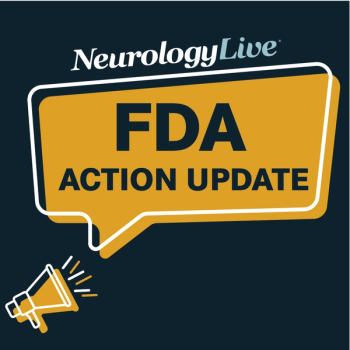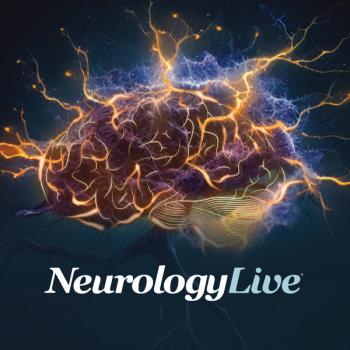
Catch up on any of the neurology news headlines you may have missed over the course of October 2023, compiled all into one place by the NeurologyLive® team.

Isabella Ciccone, Associate Editor, NeurologyLive®, has been with the team since September 2022. Follow her on Twitter @iciccone7 or email her at [email protected]

Catch up on any of the neurology news headlines you may have missed over the course of October 2023, compiled all into one place by the NeurologyLive® team.

Recent research indicated that obtaining specific variables early in established pediatric status epilepticus cases could lead to more personalized care and potentially predict refractory convulsive status epilepticus development in patients with convulsive seizures.

A recent systematic review identified that only 5% of disease-modifying therapy trials for patients with multiple sclerosis assessed fatigue as an outcome, with only 28% among 7 trials showing statistically significant results in the measurement.

Recent findings from an analysis of the CHAMPION MG study suggest that ravulizumab continues to be an effective therapy for patients with generalized myasthenia gravis, regardless of whether they had received prior IVIg treatment.

Recent research, presented at the 2023 AANEM Annual Meeting, emphasized the potential need for patient support programs targeting at-risk populations to enhance disease management and reduce acute care utilization in myasthenia gravis.

Among 67 patients with generalized myasthenia gravis studied from January 2021 to June 2023, 89.5% failed to meet clinical trial inclusion criteria, with the most common reason being a Myasthenia Gravis Activities of Daily Living score of less than 5.

In a new post hoc analysis of RAISE-XT, early responders to zilucoplan maintained their response throughout the long-term open-label extension, irrespective of baseline characteristics.

Zilucoplan demonstrated significant and sustained improvements in myasthenic fatigue when compared with the placebo in the phase 3 RAISE study and its extension trial, RAISE-XT.

The safety and tolerability of efgartigimod was consistent across different indications and doses, showing comparable rates of treatment-related adverse events with placebo in clinical trials for myasthenia gravis, primary immune thrombocytopenia, and pemphigus.

A post hoc analysis of the phase 3 RAISE study evaluating zilucoplan, a complement C5 inhibitor, showed significantly fewer patients experienced worsening and fewer requiring rescue therapy while on medication compared with placebo.

In a recent post hoc analysis presented at the AANEM meeting, findings highlight the positive impact of vutrisiran on quality of life, disability, gait speed, and nutritional status across different neuropathy impairment score quartiles.

In a recent online survey of 150 participating neurologists in the US, 74.7% reported that patients with generalized myasthenia gravis found it difficult to afford their prescribed therapies, and 60.0% noted an increased likelihood of exacerbation or hospitalization for these patients.

Presented at the 2023 AANEM meeting, new findings suggest that subcutaneous efgartigimod could be a valuable treatment option for patients with myasthenia gravis, with well-tolerated cycles and improved daily living activities.

Presented at the 2023 World Sleep Congress, preclinical findings highlighted ORX750's potential as a novel treatment not only for narcolepsy type 1 but also for broader sleep-wake disorders, including narcolepsy type 2 and idiopathic hypersomnia.

A recent study assessing TAK-861, an orexin-type 2 receptor agonist, high and lose doses of the therapy demonstrated improvements in wakefulness compared with the placebo in healthy adult men.

As part of our monthly clinician spotlight, NeurologyLive® highlighted stroke expert Laura K Stein, MD, MPH, assistant professor of neurology at the Icahn School of Medicine at Mount Sinai and attending physician at the Mount Sinai and Mount Sinai Queens Stroke Centers.

With the FDA approval, vamorolone (Agamree) becomes the first-in-class dissociative steroid therapy for patients with Duchenne muscular dystrophy. Catalyst Pharmaceuticals plans to launch the treatment in the first quarter of 2024.

If in-person interventions are unavailable, remote forms of telerehabilitation may be considered as a solution with very little cost-effectiveness and an easy option for physiotherapists and patients, even if it is for a short period of time.

Patients with mild Alzheimer disease who received high doses of BIIB080 demonstrated improvement in cognitive and functional outcomes compared with placebo, supporting further investigation.

Findings from the trial demonstrated rapid and sustained clinical response in patients with Alzhiemer disease agitation during the open-label treatment phase and did not show any new safety signals.

The data suggest that central nervous system-derived extracellular vesicles in the blood will likely play a key role in biomarker development, especially for patients with Parkinson disease, in the coming years.

Nancy Foldvary-Schaefer, DO, FAAN, director of the Sleep Disorders Center and staff in the Epilepsy Center at Cleveland Clinic, discussed the recent advancements in narcolepsy treatments and the importance of incorporating a holistic care approach for patients.

During the progression of the movement disorder, older patients with Parkinson disease may see changes in their insulin-like growth factor and serum homocysteine indices but a potential therapy could improve these factors.

The FDA’s decision to allow at-home dosing of intransal foralumab for patients with multiple sclerosis is likely to improve patient compliance to treatment and health outcomes, according to a recent release statement.

During the open-label treatment period, 83% of patients with idiopathic hypersomnia who completed treatment saw a significant reduction in sleepiness, with an average Epworth Sleepiness Scale change of -9.4 points.

Mark I. Boulos, MD, BSc, FRCP, CSCN, MSc, associate professor of medicine, division of neurology, Institute of Medical Science, University of Toronto, talked about a comprehensive meta-analysis aimed to determine normal mean sleep latency values to accurately help clinicians with interpreting sleep test results.

In a recent clinical trial, patients who received SaiLuoTong showed improvements in aspects of memory and executive function including delayed episodic memory retrieval, switching between cognitive concepts, higher-level divided attention, and multitasking compared with placebo.

Findings from the OCARINA I study presented at the MSMilan 2023 meeting showed that a 920 mg subcutaneous dose of ocrelizumab was well-tolerated in patients with relapsing or primary progressive multiple sclerosis, with similar exposure to the FDA-approved intravenous dose.

A recent analysis presented at MSMilan 2023 showed significant cognitive and biomarker improvements among patients with progressive multiple sclerosis receiving repeated intrathecal injections of autologous mesenchymal stem cells.

A new analysis of the SAkuraMoon study showed that annual relapse rate remained consistently low in satralizumab-treated patients, with high proportions of patients remaining free from relapse, severe relapse, and worsening in disability.